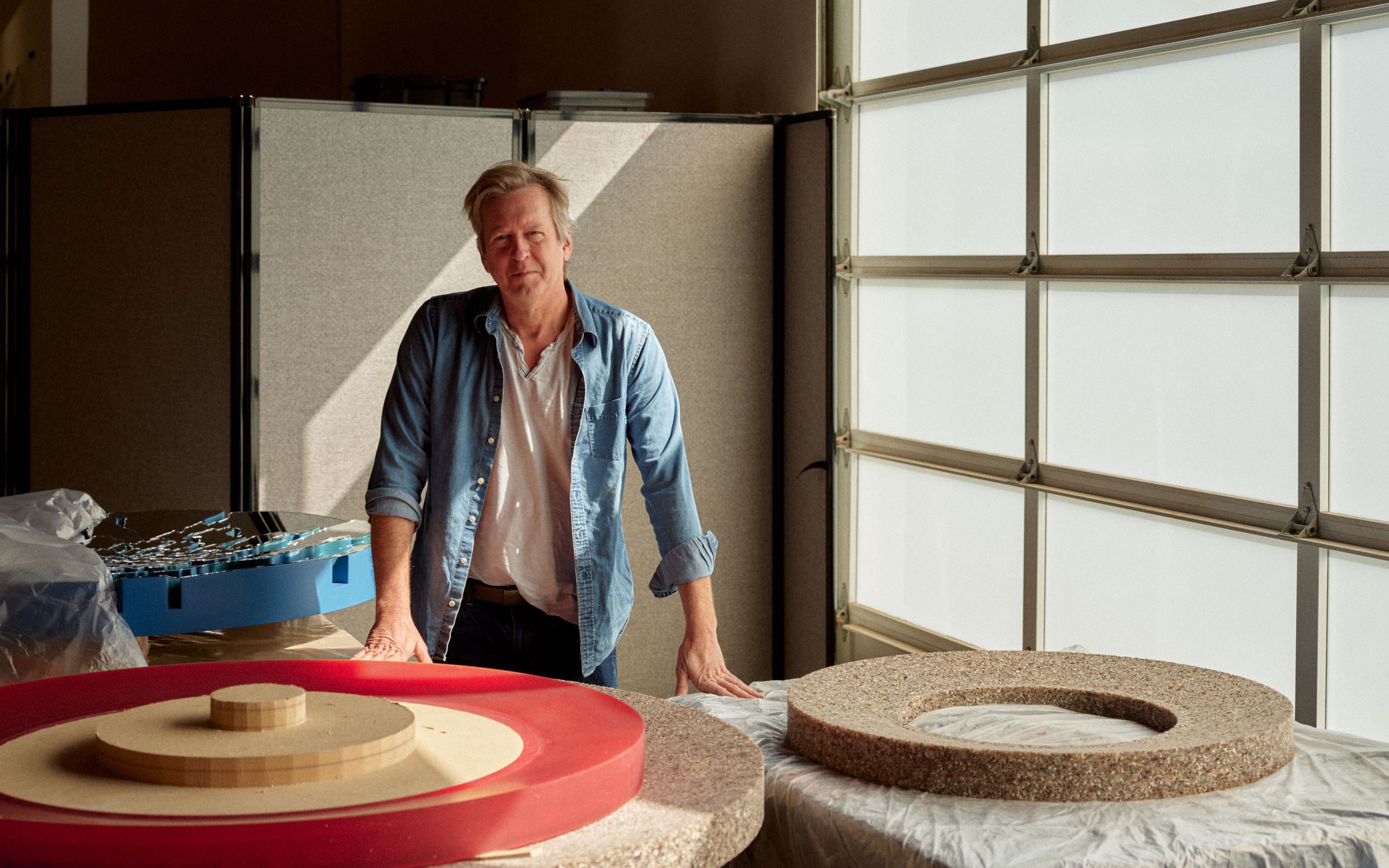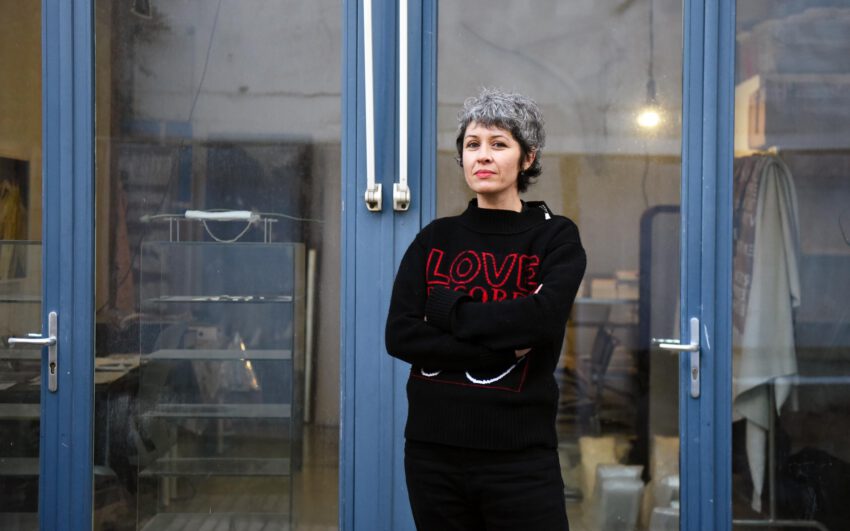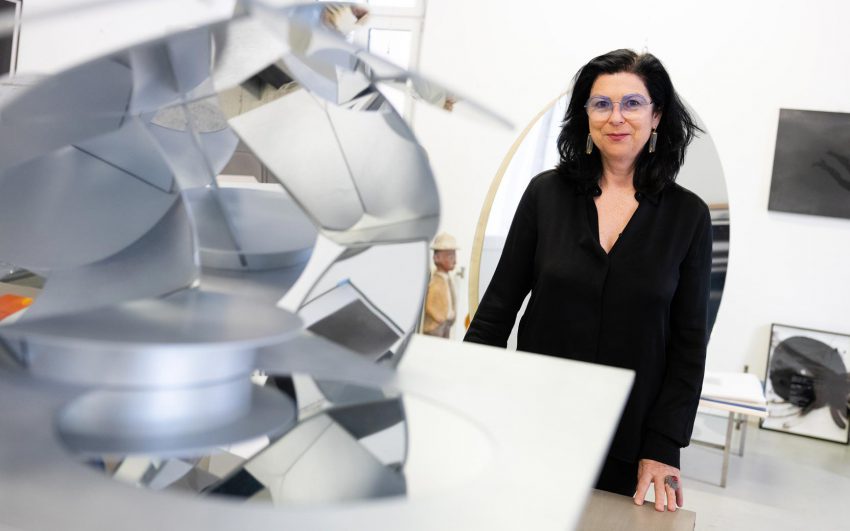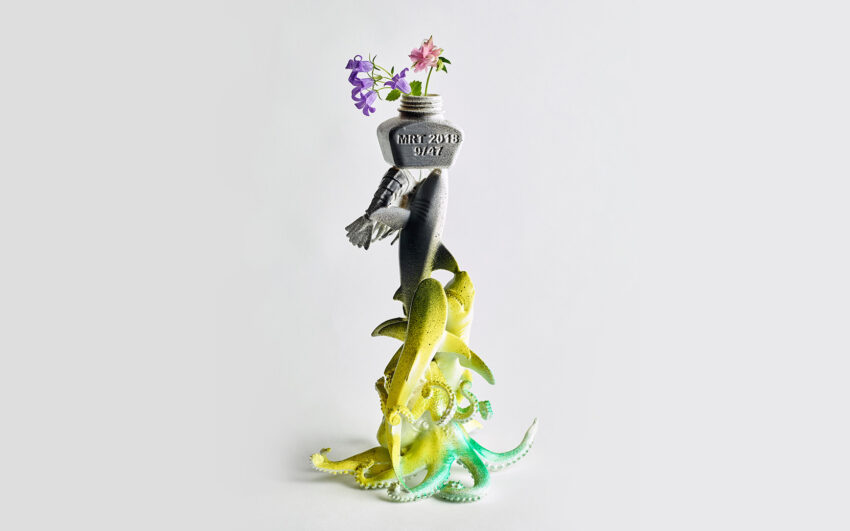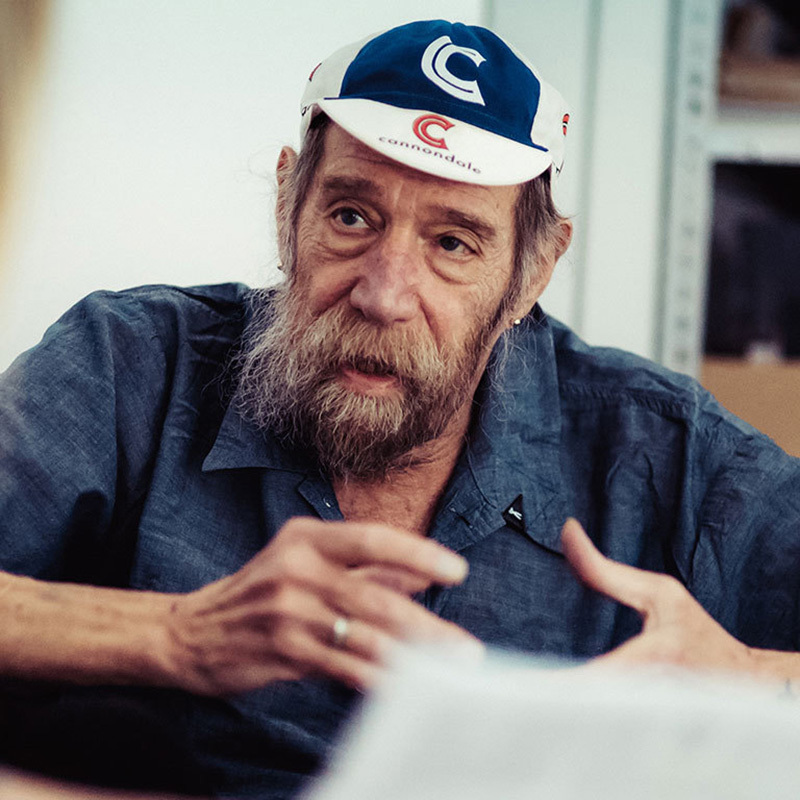Doug Aitken is an American artist known for installations that span a wide spectrum of media and genres; they may include video, print media, photography, sculpture, sound, and performance. Aitken wants to make the traditional definition of art more accessible to a much more comprehensive and connecting meaning. The viewer is invited to move through his large-scale works, either by walking around huge screens, stepping on a train, or even swimming through mirrored sculptures – to name but a few of his immersive projects.
Doug, how did you get into art?
I was just always into creating things! To me, an artwork is like oxygen; it’s this vessel that allows your curiosity and ideas and ideology to flow. You breathe in and you push out something. I have always been really absorbed in art, and later went to art school.
As a child, you were travelling a lot with your parents. How does that come through in your work?
I think that if you experience a lot of diversity, then there are much less barriers. I have always been living on the road. There is a curiosity and a generosity inherent in humanity, that art can tap into. Creativity is coming from all parts of the world, no one region or area holds the power of culture: we all are creating this energy simultaneously. Consequently, we should see contemporary art, not as a rarefied, curated and controlled entity, but more as an organic matter.
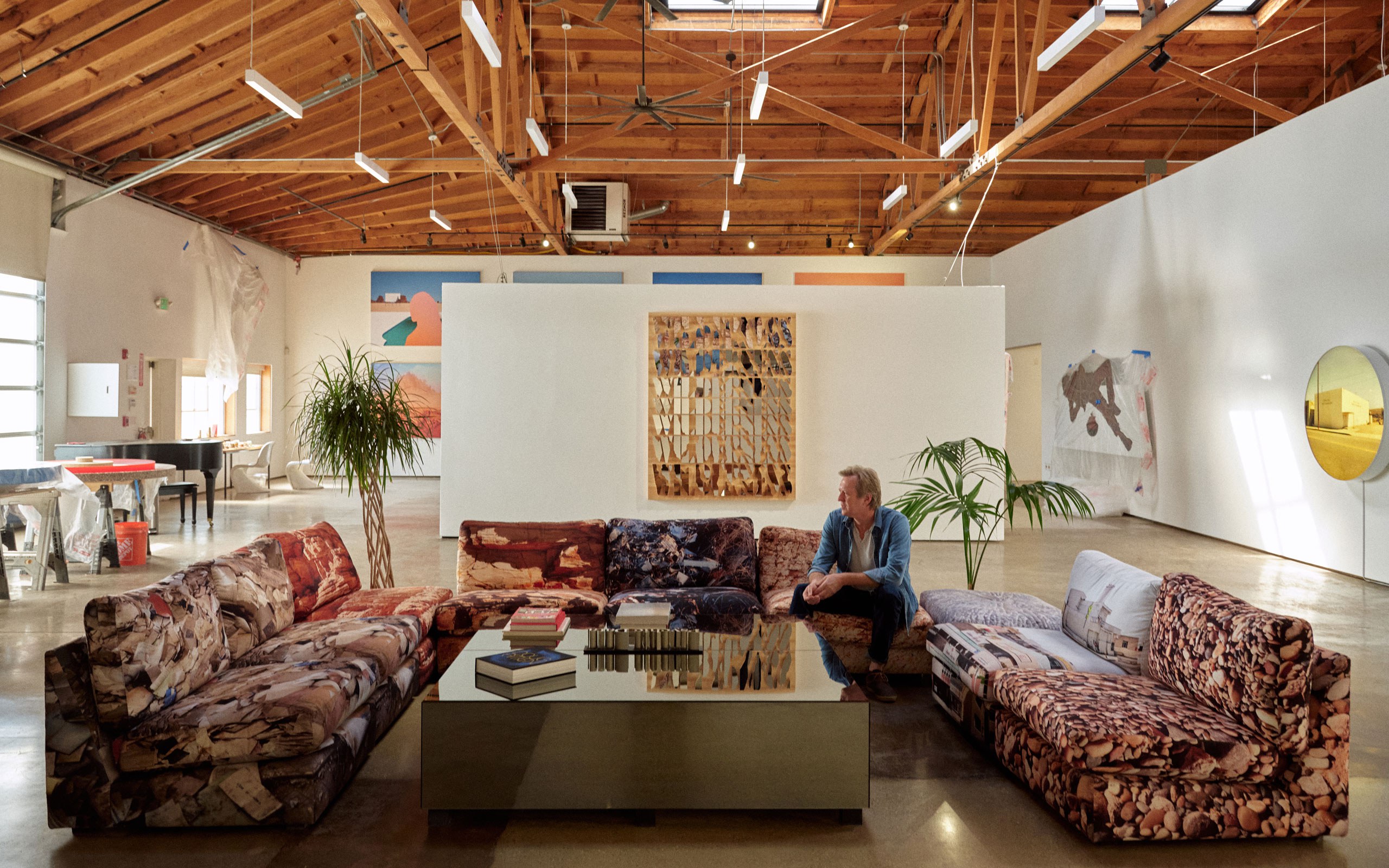
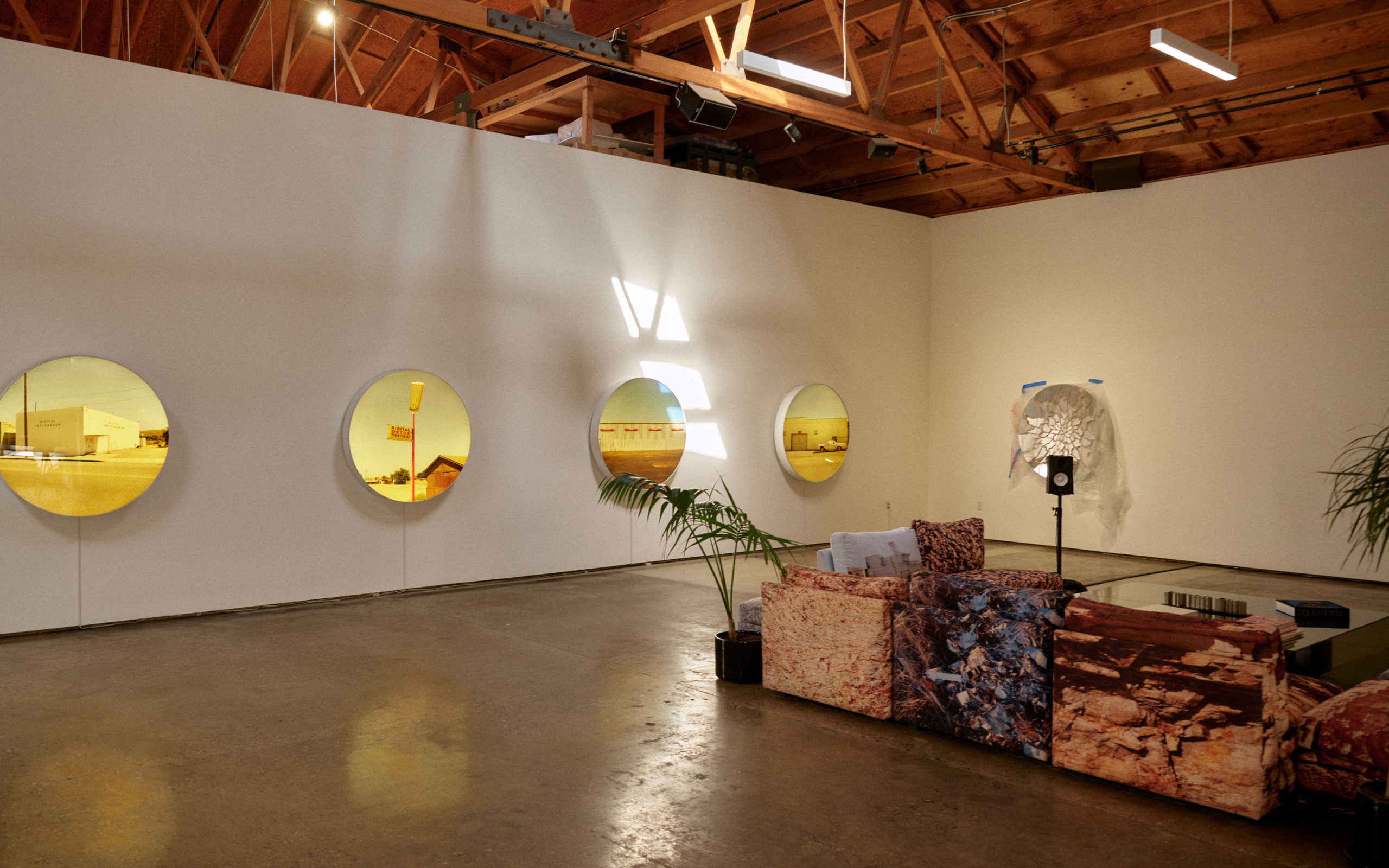
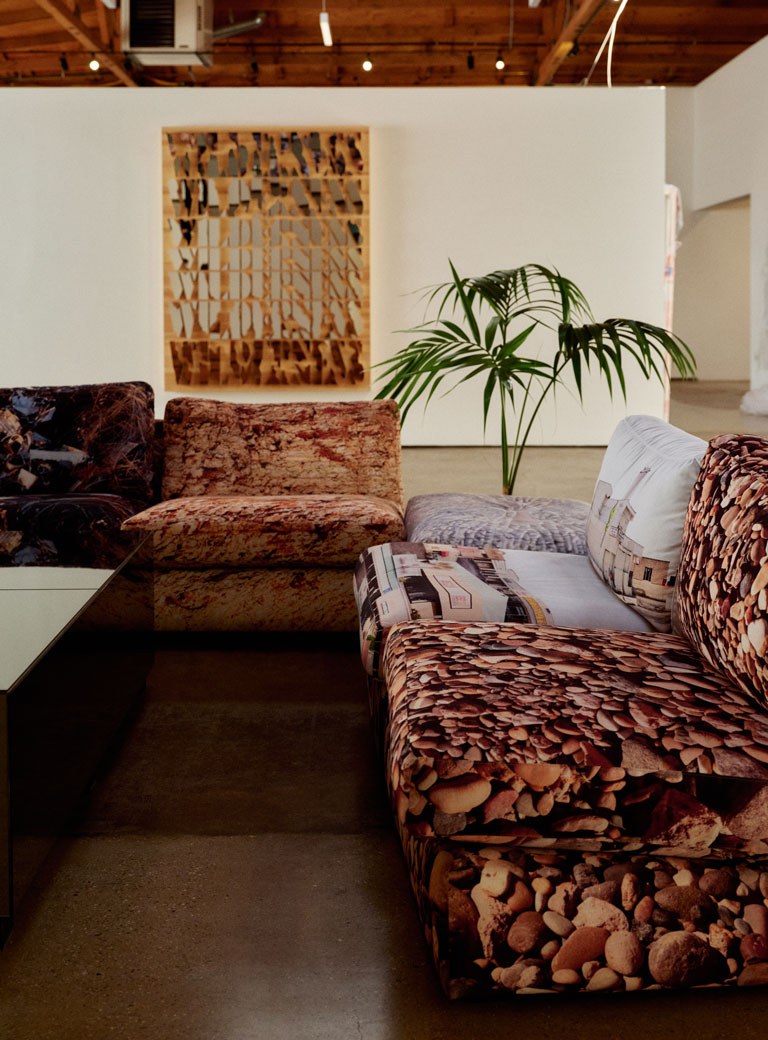
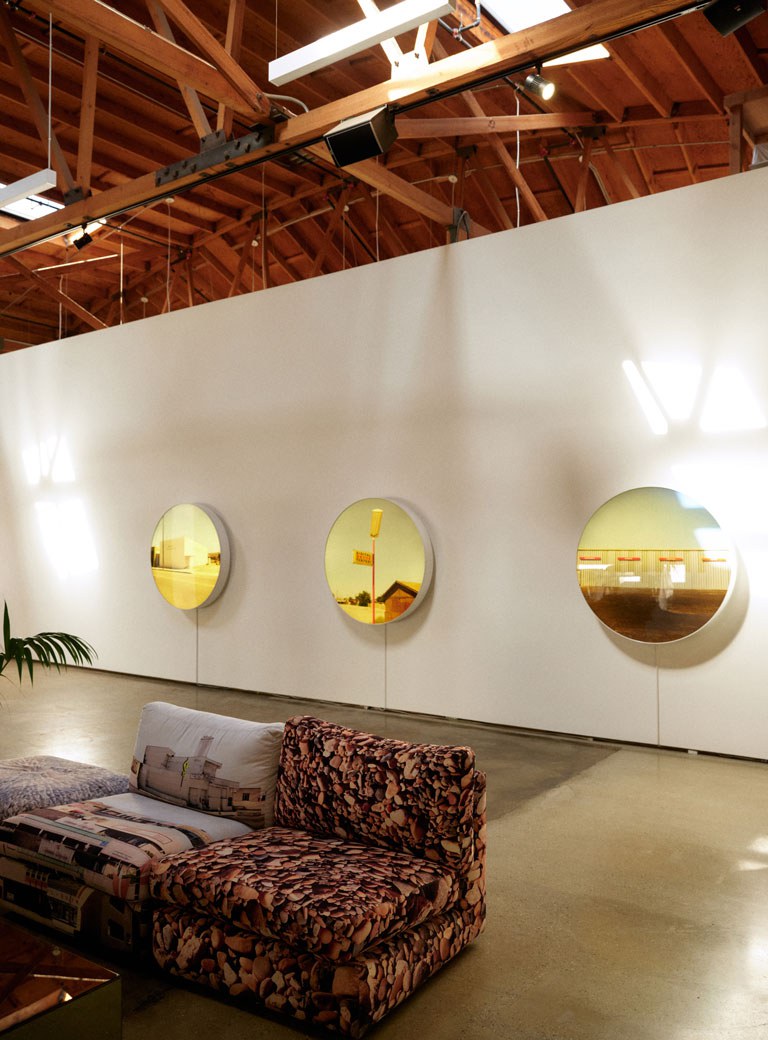
Accordingly, you have been criticizing that contemporary art is being put in rigid silos. Could you explain?
The question of: “where is art going?”. A lot of the art that we see exists in a formal tradition - and continues to do so, and that is not so exciting. That does not really tap into the potential and possibility of art. I like seeing art breaking outside of the standard confines.
What will art in the future look like, then?
I think we will see more and more art in unexpected places, and new mediums, art that is grappling with non-material approaches. I would like to see art “become” something, not siloed and segregated. There shouldn’t be this separation between music, visual art and all these other areas that seem to be surrounded by walls. If we were at a dinner tonight, we would talk about music, books, film, songs. All these things are connected, but we live in a world where they have become very separated.
Is it up to art to break down these barriers?
Art can be an agent of change, allowing us to see and reflect our world differently. Now is a great time to make art – it is an unprecedented moment in history. There is this Zeitgeist of change of technology, ecology and the acceleration of information – all elements that are completely destabilising. They are continuously disrupting what we think we know.
To come to terms with these challenges, is culture the answer?
Yes, this is why we need culture. Culture allows us to navigate these changes. It is an incredibly valuable time for the arts, but we also need to support them to become as forward thinking and as progressive as they possibly can.
Does this mean that art needs to be disruptive to be relevant now?
I don’t think art needs to be anything, and that is one of its beauties! It is this huge vast landscape… and I’m constantly struck when I look at my phone and see yet another artwork that someone has made somewhere in the world. It is incredible how many people not only view art, but create art. In essence, art is a necessity, not a luxury.
Like life itself?
There is no separation between art and life. The process and the journey itself is the destination. You are learning and growing, you are challenging and building up languages. As an artmaker, you are a kind of worker – chipping away, making things with a lot of effort and time. But at the end of the day, I am just trying to make a bridge to you. Maybe you cross over it, maybe you don’t, but perhaps you find some perspective or questions that you had not encountered before. The value of art for me is to create this energy source, this crystallisation of ideas.
On a more profane level, some people like to own a piece of this energy. What do you think about art that can actually be bought?
To me it is not either or, it is about possibilities. Let’s have more options and put a larger meal on the table. Because – what is culture? We have this one life, and the clock is moving forward. Culture is the thing that gives us the spice of life, the dynamic range. It takes us beyond mere survival – it elevates us. It hypnotises us and draws us in, we make love to it, or we disagree with it, but it is dynamic!
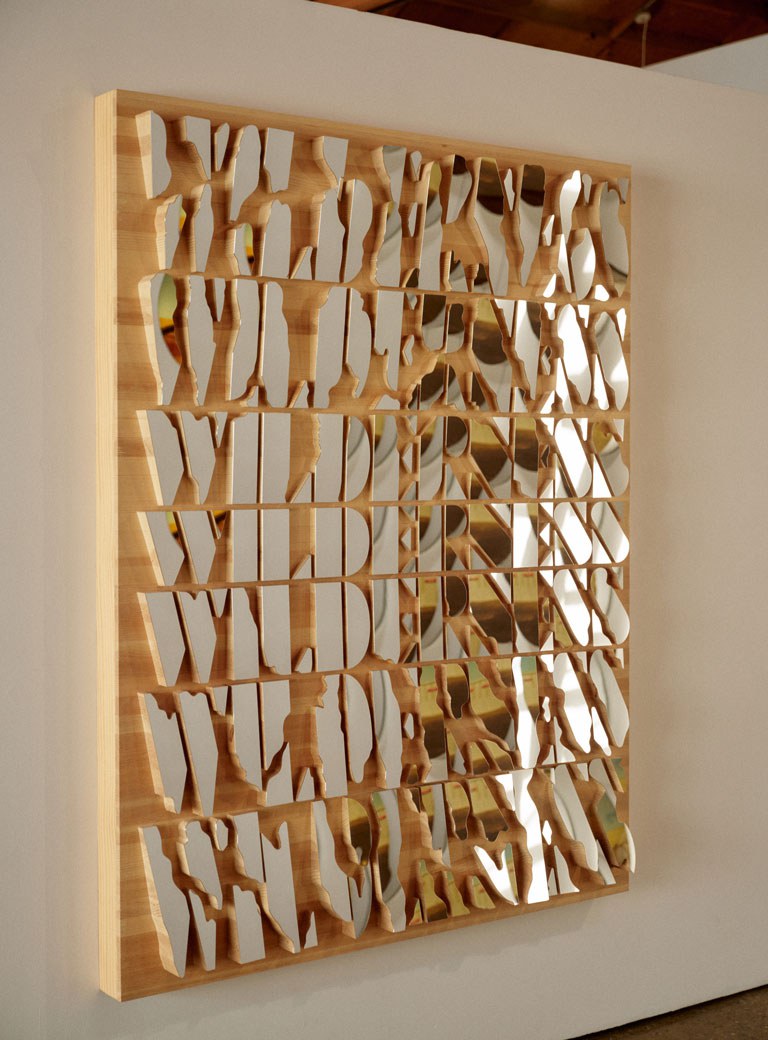
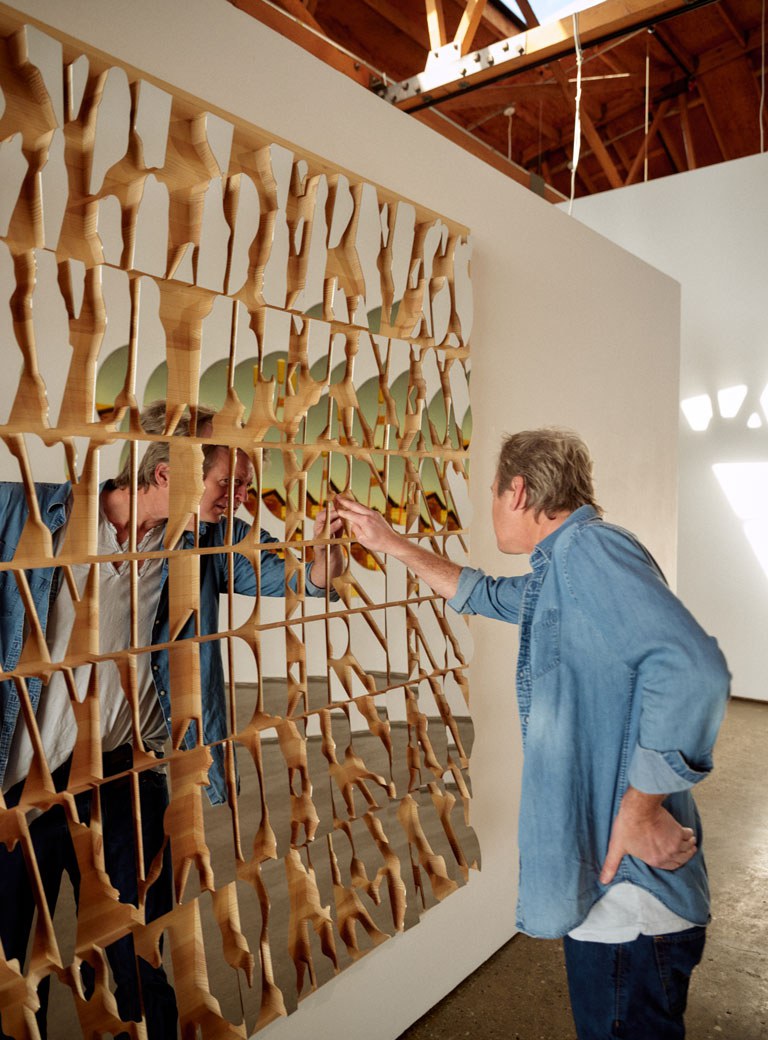
Talking about dynamics: in your installations, people are walking around, creating their own path. So, is your art about individual experiences?
In my last show in Switzerland, HOWL, in partnership with the Eva Presenhuber Gallery, I used many different mediums to create this show. It was like a constellation of ideas about the individual in our landscape that is changing, a landscape that is being mined and altered. I used the exhibition to create a larger story and to bring all these ideas to one space. As we move into the future, we need art to be in front of us, showing us possibilities on how to navigate this new world.
Speaking of gallery exhibitions: How difficult is it to boil down your concepts into smaller works suitable for such shows?
Every idea tells you what it needs. Some projects want to be intimate and small, others vast and sprawling. I love doing museum and gallery shows because you have these parameters. There is only so much space, and the question is how to really create a narrative, to occupy that space. Parameters can be creative tools. But then, trying to break them is also a creative!
Which then means reaching more people, outside the art bubble. Is that important to you?
I have had many experiences where artworks I have made have connected with people who usually don’t go to museums. And those encounters were some of the most powerful, provocative moments for me. When art erases barriers, when it creates a dialogue: that is the height of the power of culture! It transcends everything else, all the trappings of politics or social divides. When people can experience something and share that encounter… those moments can be indelible! And I think that is what we subconsciously want – to have some experience in life that is distinctly unique.
What do you say to people who think that this view on the transcending power of art is too idealistic?
I would say fuck you (laughs)!
So the experience of the viewer must be very important to you?
I want to empower the viewer, allow them to collage together their own story out of the pieces I make. I am not attracted to work that is didactic, that is telling you what to think. I like art to have more atmosphere and room for ambiguity and dialogue.
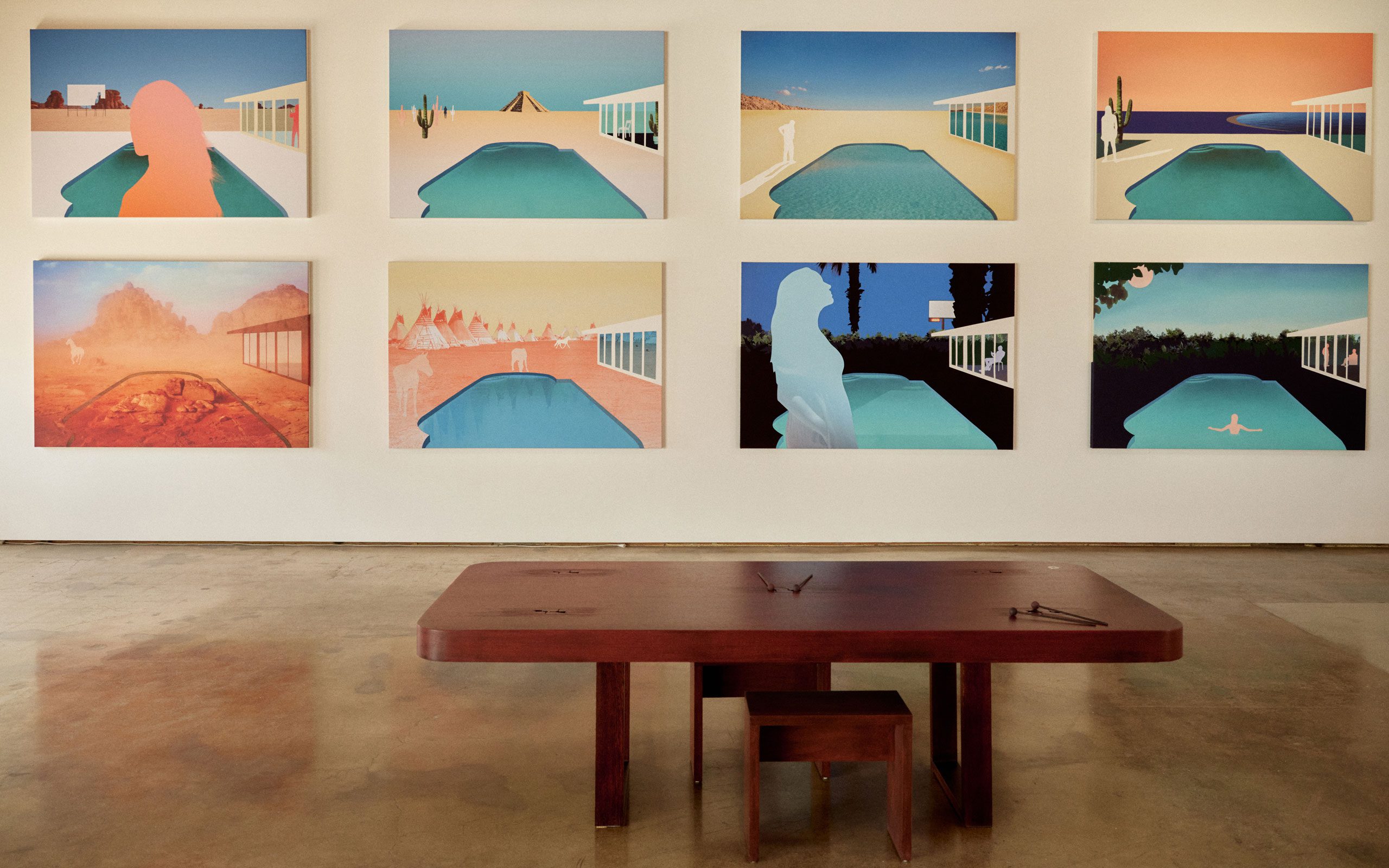
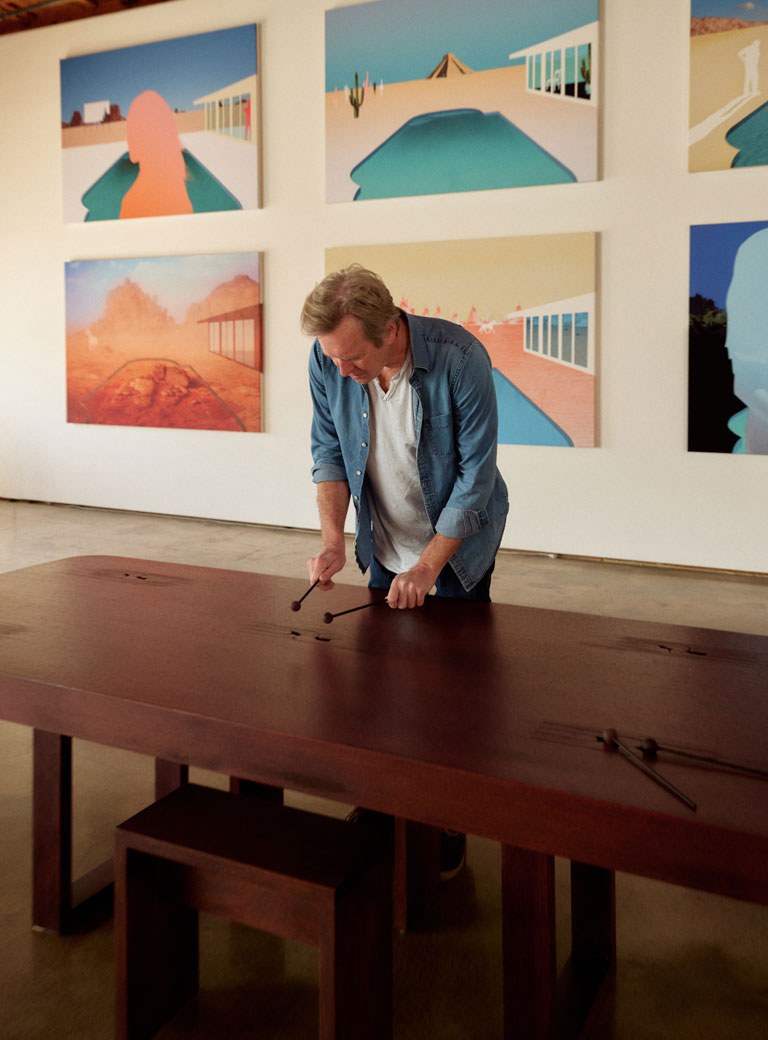
Landscapes seem to come up often in your work. How do you see the modern human moving in these kinds of landscapes?
That is a good question. The landscape we are living in today is entirely different to what we experienced in the past. The space between the screen and the reality is constantly being questioned: the notion of what is real, what is fiction vs nonfiction. That is something I am very interested in exploring with my artwork. I like the idea that I can present something to the viewer that they can interact and dance with, move through, be inside of. Artmaking now is a huge unexplored frontier, like this vast jungle, of which we know little about.
To make the art experience more accessible, you use videos projected on huge screens.
Well, I have always strived to create something that has less barriers, less space between the viewer and the work. There is no looking from a distance, judging, then moving on. I have always tried to push boundaries and used installations, sound, audio and architecture to create spaces that do not exist. I want to give the viewer a different kind of experience.
Most of these experiences are ephemeral. But do you actually create permanent installations too – which do you like better?
To me, art is like a large tree with many branches. I don’t have a medium that I only work in, I don’t have a single aesthetic that defines me. I want to be free, liberated and able to move in any direction. And let the ideas themselves propel these directions. To me, that is the excitement of being alive.
Whenever people move through your installations, they take out their mobile phone and see your art through it. What do you say to that?
It’s this idea of living in a space between physical reality and screen reality. I feel that there is this desire in our society, which is accelerating so fast, to use the phone to try to capture a little slice of reality, to preserve it and memorize it. I find it fascinating – we didn’t even have cameras 150 years ago! And now, we take images like a mountain climber would use each grip on the mountain.
There truly is a mountain of pictures! We seem to be experiencing real life through the screen. But is not a visceral experience more interesting?
Yes. The point that you made is precisely at the core of my projects. For instance, The Underwater Pavilions presents three sculptures under the ocean. You can’t go to a museum and see it… you have to travel to an island and swim through these artworks! The first time I experienced the work and swam through this underwater sculpture forest, I had this moment of disbelief and disorientation. This mirrored sculpture was in front of me, I was touching the sharp rocks around me, orange fish passing me by… and it was actually real! It was my experience alone, one that no one else will have, and it’s that experience that I gained through an artwork.
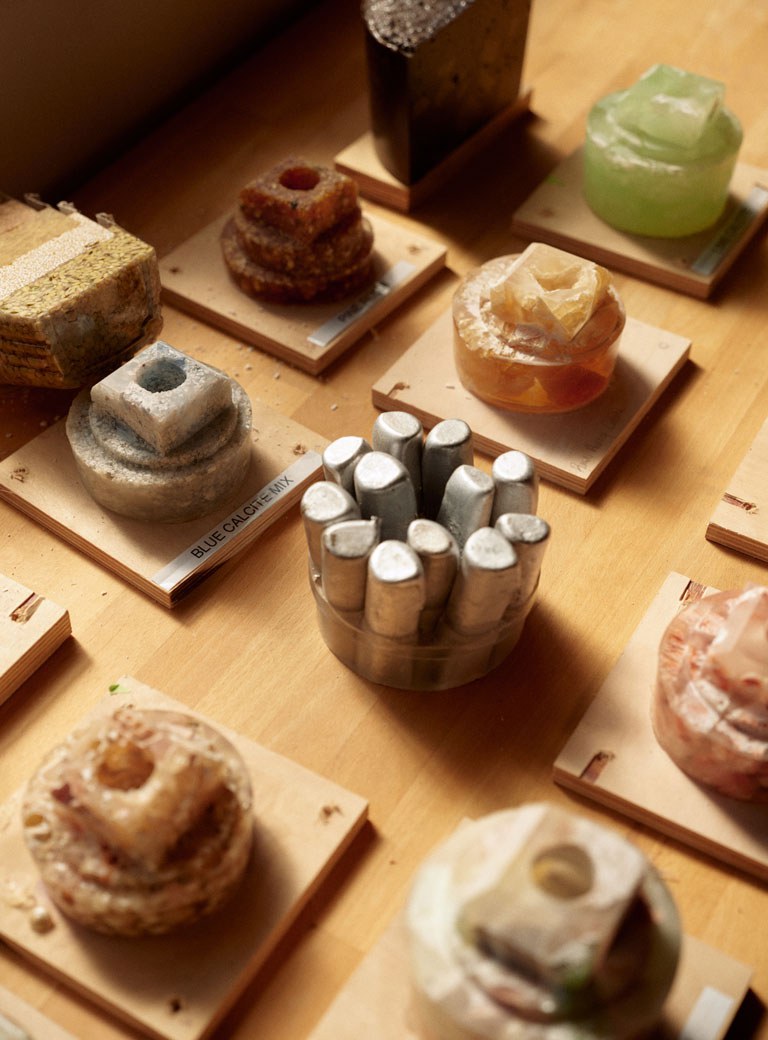
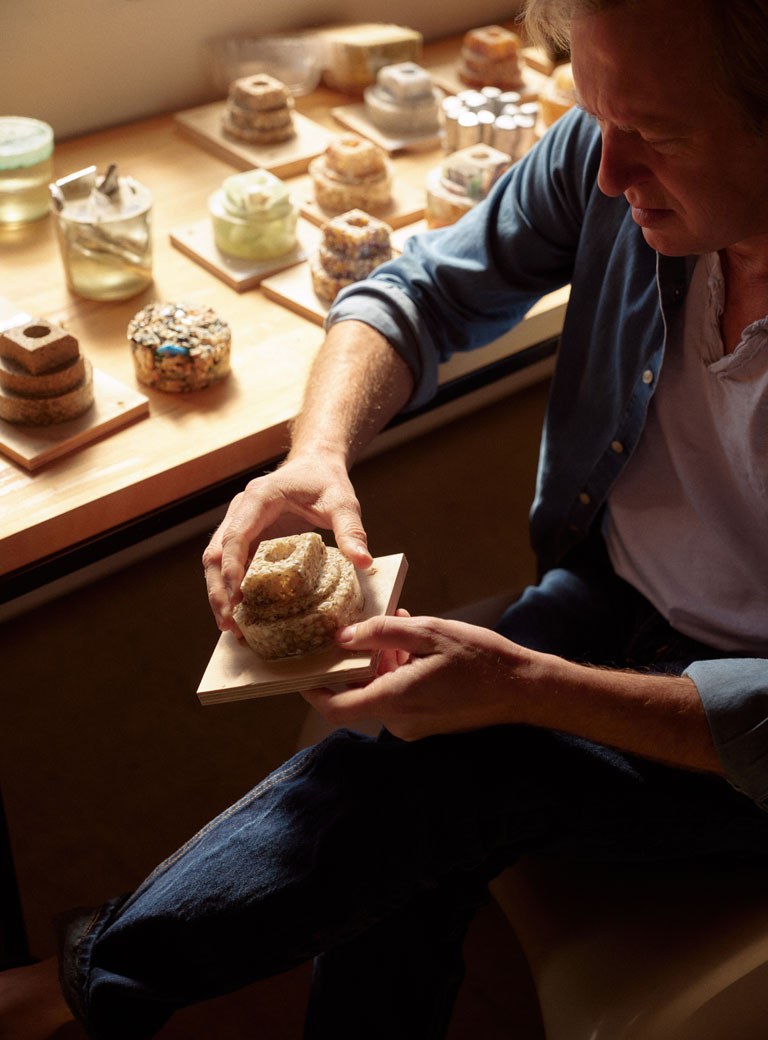
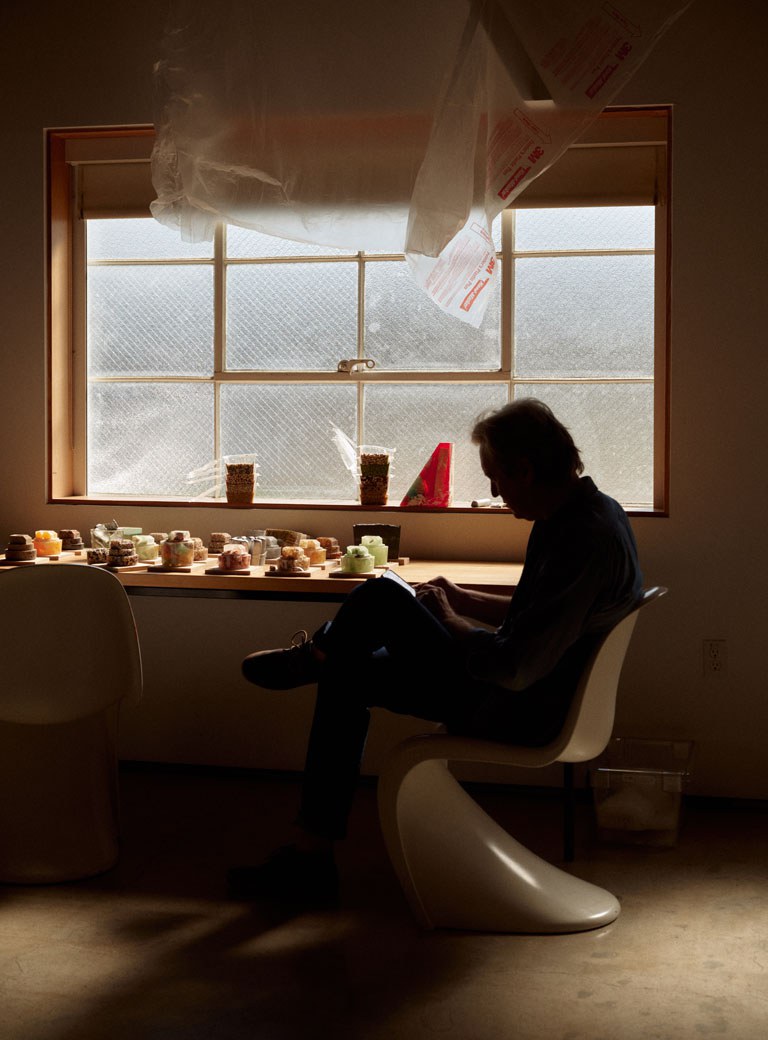
Some of your artworks are less public though, being kept in private homes. Do you feel sorry that they may never be seen again?
Somebody who lives with your artwork has stories, a relationship with it. Art does something to you if you see it every day.
Has this happened to you, in reverse, too?
Yes! I have a sculpture in my home, from the Austrian artist Franz West – the only artwork in my house. He was a friend, and at some point had wanted to trade artworks with me; I was just happy to let him have my work! However, months later this enormous box showed up at my studio, and inside was this huge, strange, incredible meteorite-like sculpture on a pole. When I asked him about it, he said: “I wanted to make you something from scratch. The last time I came to visit you, I wrote down these two words that you were continually using: meteorites and revolutions. So, I made you this revolutionary meteorite” (laughs). It’s like this sculpture that has fallen from space, red and yellow and filled with energy. It’s really a piece of who Franz was, and his attempt to author something about me and to share that energy. That is as beautiful as it is potent of an example of art living on and transcending everything around us.
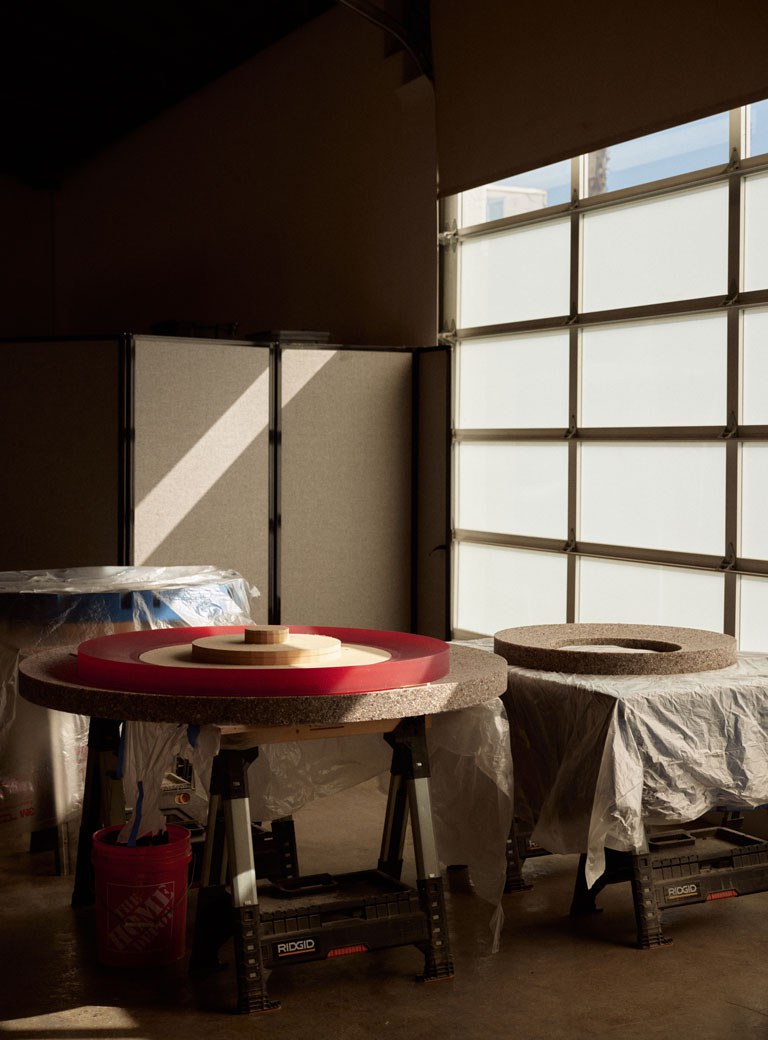
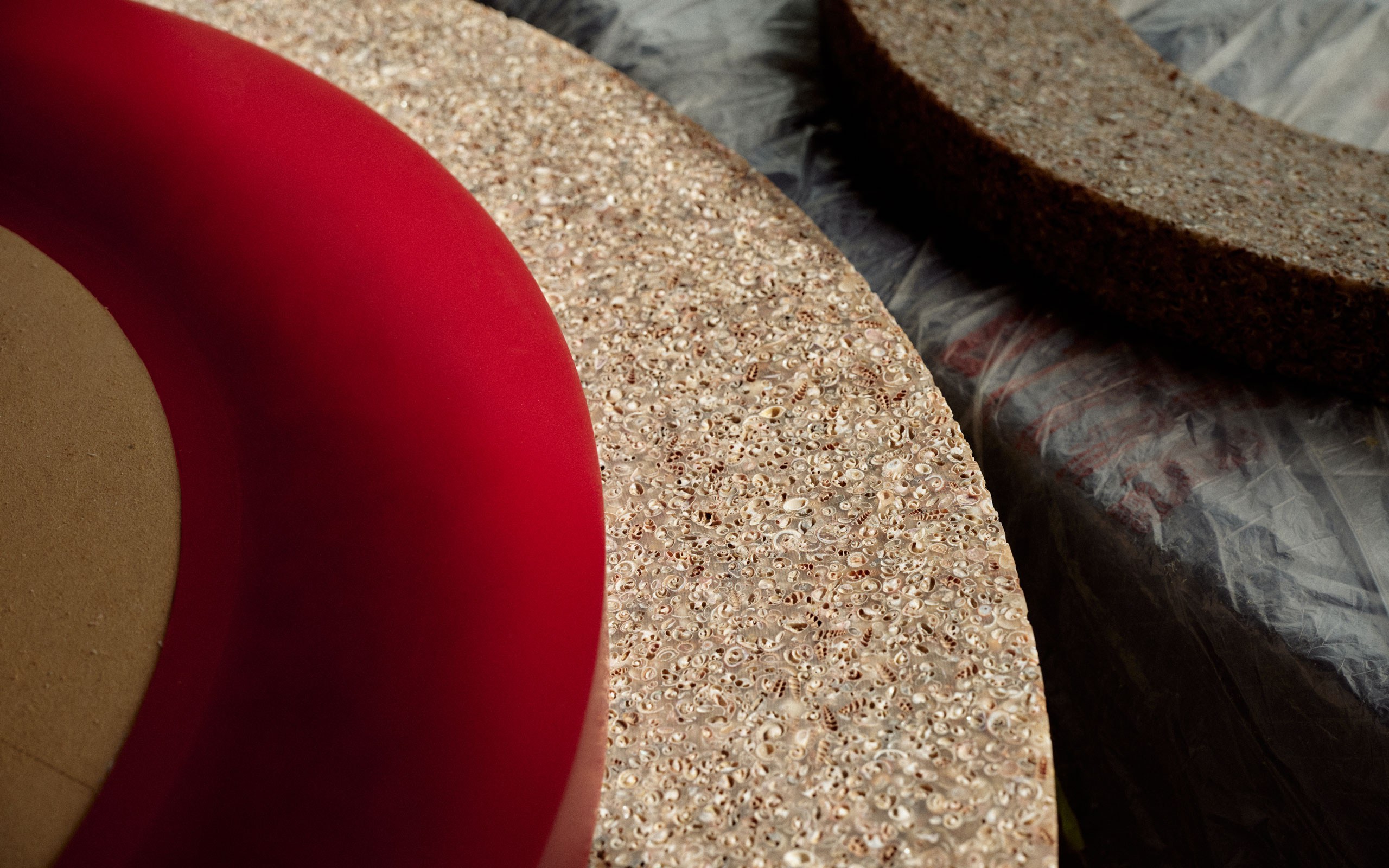
A very different kind of sound is part of your latest work Lightscape; could you tell me about it?
I like to use music and sound a lot, some music I write, some comes from personal collaborations with musicians. The project I have worked on for the last two years is a collaboration with the Los Angeles Philhar crystallization monic Orchestra, Lightscape. It’s the first time the Philharmonic has collaborated with a visual artist. And together we create this kind of Gesamtkunstwerk!
What is it about?
I have been writing this story about our landscape as we move into the future. It is told through ten different stories, all with different characters and locations. At the core of the work is a feature-length film and a multi-screen fine art installation that combines fiction, graphic storytelling, surrealism, and modern mythology. The project is anchored by a song cycle that speaks to the future - a portrait of a culture in flux, it explores the liminal space between natural and synthetic environments.
What kind of sound do you use?
Nearly dialogue-free, mesmerising images are propselled by a rich sonic tapestry, blending original compositions that I have written - which are sung by the Los Angeles Master Chorale with iconic minimalist works by Philip Glass, Meredith Monk, Steve Reich and others performed by the Los Angeles Lightscape’s kinetic musical score mirrors the patterns of our digital age. It will premiere, with the Philharmonic performing live to this large-scale film, in November 2024 in LA.
Was it important for you to do a project that is open to a lot of people?
I don’t start a project by saying that it is one I want many people to see. Certain ideas create platforms that can be very open. Art has many languages; it can be so many things.
Lightscape sounds like an all-encompassing work of art…
Lightscape has sound, film, moving image, light - it is all very non-material. However, when I returned back to the studio from filming for five months at last, I wanted to make physical things I could touch with my hands again (laughs)! To get dirty, to feel the earth. That, to me, is a metaphor for art. Art is not singular. Art is plural, it can be many things. The beauty of art is that there is no right and no wrong – there is no one way to do it!
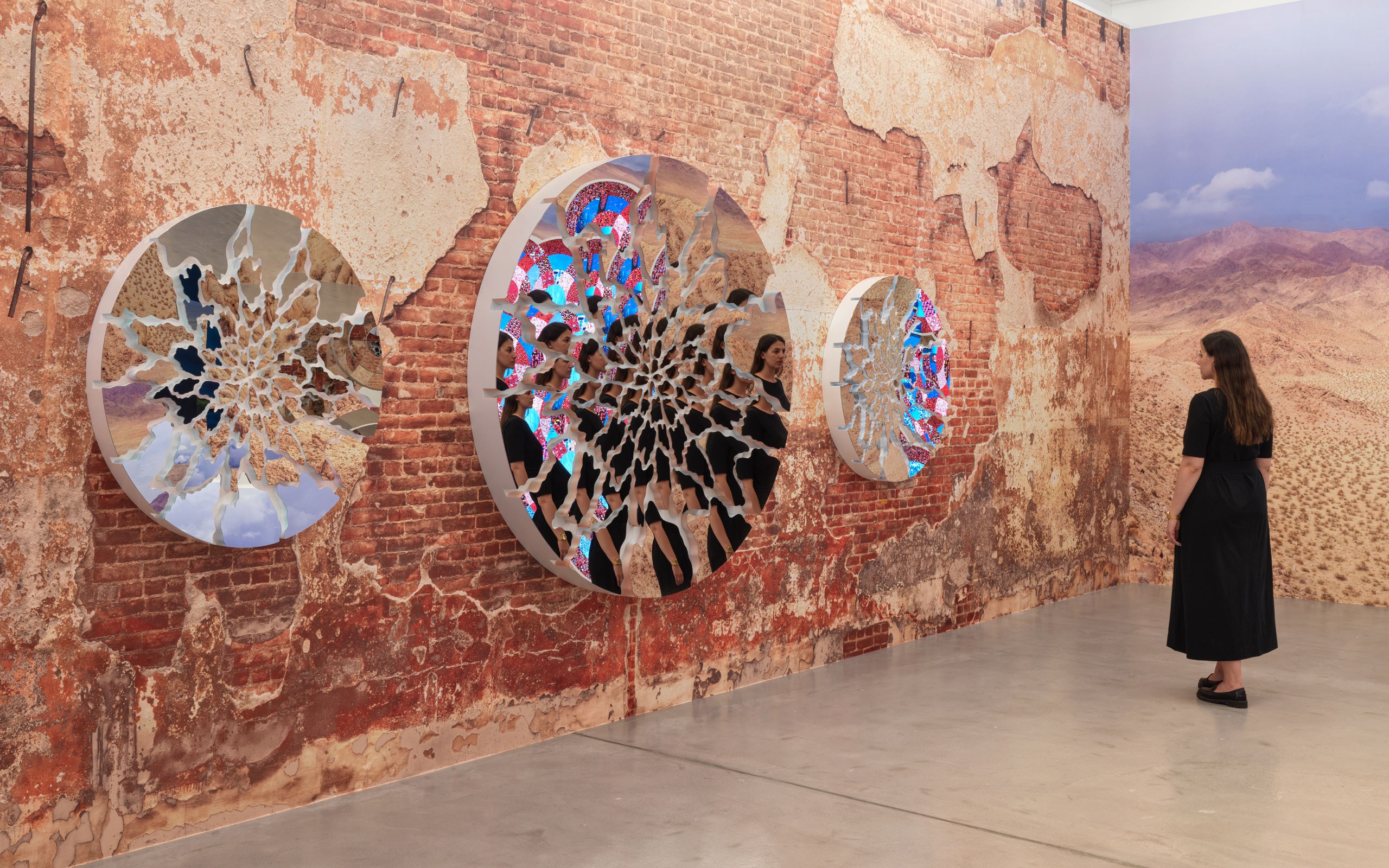
Installation view, Doug Aitken, HOWL, Galerie Eva Presenhuber, Zurich, Maag Areal, 2023 © Courtesy the artist and Galerie Eva Presenhuber, Zurich / Vienna Photo: Stefan Altenburger Photography, Zürich
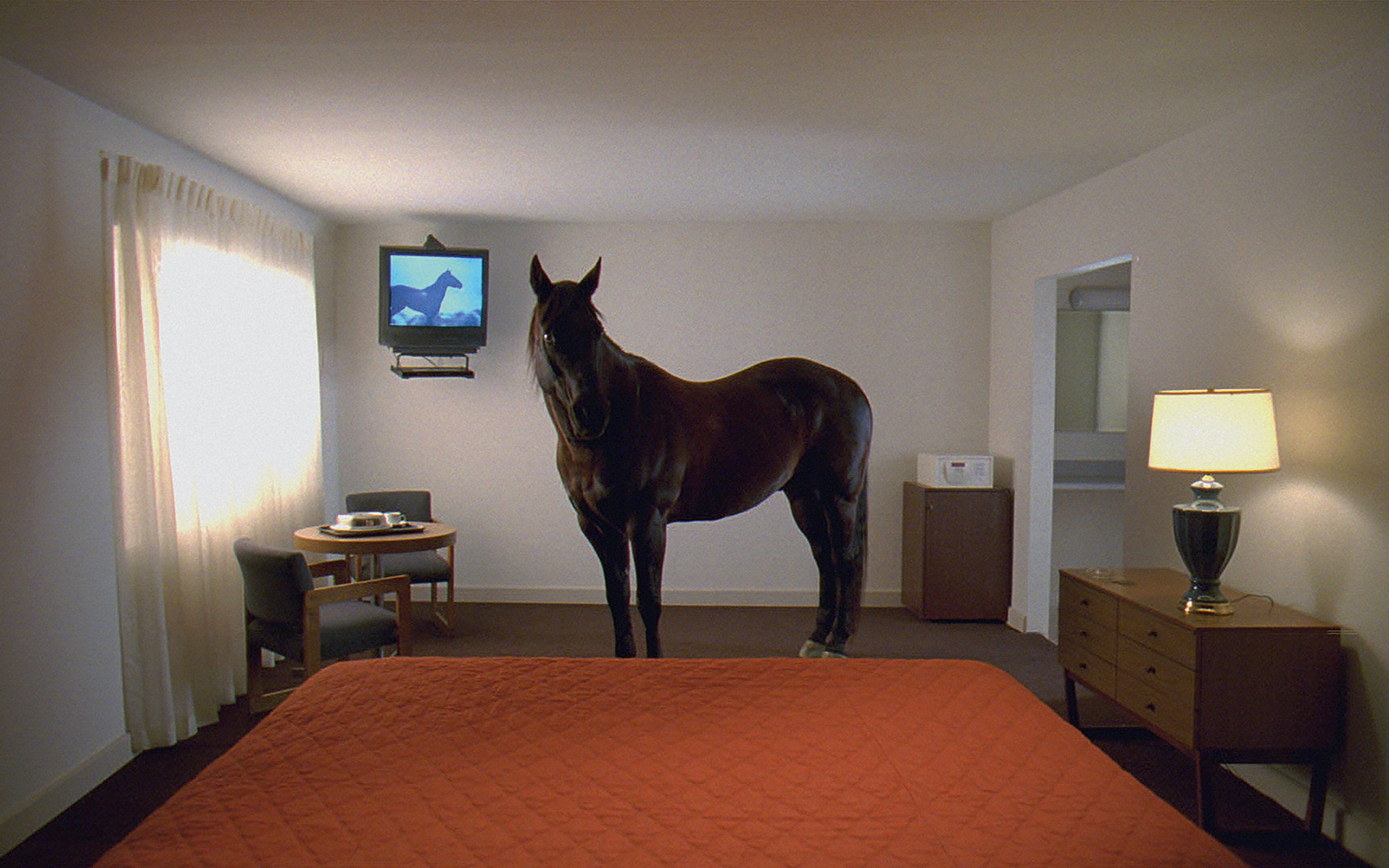
Doug Aitken, migration (empire), 2008, Film still, © Doug Aitken, Courtesy of the artist; 303 Gallery, New York; Galerie Eva Presenhuber, Zürich; Victoria Miro, London; Regen Projects, Los Angeles
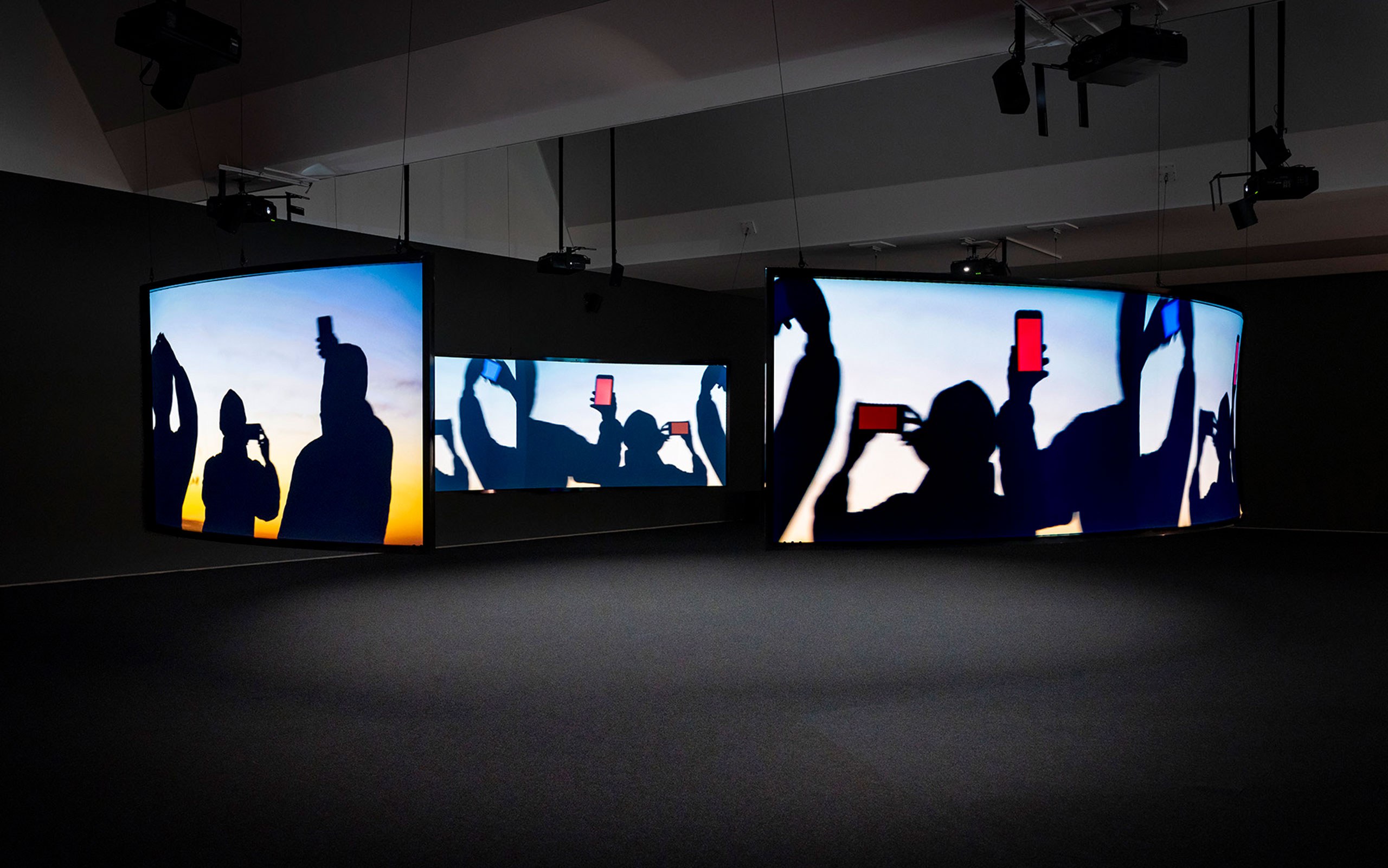
Doug Aitken, Wilderness, 2022, © Doug Aitken, Courtesy of the artist; 303 Gallery, New York; Galerie Eva Presenhuber, Zürich; Victoria Miro, London; Regen Projects, Los Angeles, Foto: Frank Kleinbach
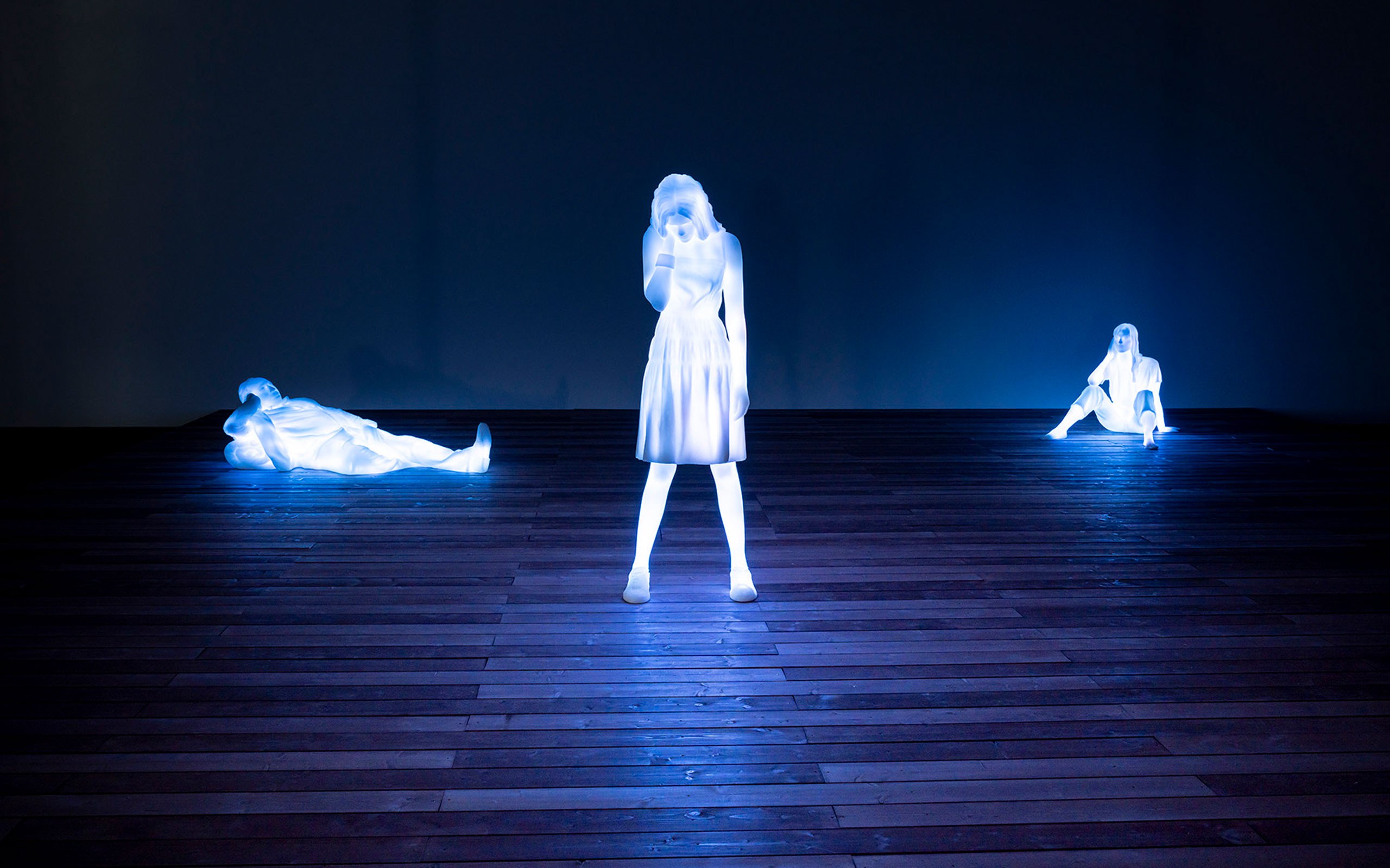
Doug Aitken, 3 Modern Figures (don’t forget to breathe), 2018, Faurschou Collection, © Doug Aitken, Foto: Frank Kleinbach
Interview: Alexandra Markl
Photos: Cody James


